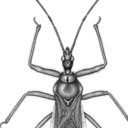[Prevalence of sensitization to allergens in patients with allergic rhinitis and respiratory disease in Qingshan of Wuhan].
Ключавыя словы
Рэферат
OBJECTIVE
The purpose of this study was to determine which allergens were prevalent in patients with allergic rhinitis and respiratory disease in Qingshan Wuhan.
METHODS
A total of 700 cases, which were diagnosed as allergic rhinitis and respiratory disease by history and clinical presentation, underwent ELISA test with 7 standardized allergens, and the most important sensitizing allergens were assessed. The samples were stratified on two age groups: AR and respiratory disease group and the positive rate of two main allergens in two groups were contrast analyzed.
RESULTS
For patients with allergic rhinitis, the positive rate of the top seven aeroallergen were dermatophagoides (47%), herbs (19.7%), tree (18%), animal dander (8.9%), house dust (6.5%), mold (4.9%) and wormwood (3%). There was no significant difference in higher sensitivity to dust mite and ragweed between allergic rhinitis and respiratory disease group (P > 0.05).
CONCLUSIONS
Dust mite, Tree and Herbs are the most important three aeroallergens in Qingshan region of Wuhan.




